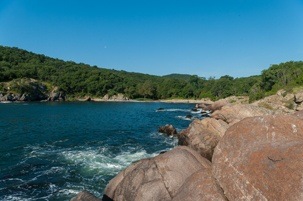
From Beglik Tash to the wild Bay St. Paraskeva
The trail starts from the Thracian sanctuary Beglik Tash passes through scenic forest road and reach the wild Bay St. Paraskeva, that was an ancient port and later served as a hideout of pirates in the Middle Ages.
This path is the most scenic trail around the area of Ropotamo Reserve, near the town of Primorsko, Bulgaria. It provides the opportunity to see objects of archaeological importance and to enjoy the beautiful forest scenery, sea and rock formations.
How to get from Beglik Tash to the wild Bay St. Paraskeva in Ropotamo Reserve – map, route and GPX file
Download file: Beglik_Tash-St_Paraskeva_en.gpx GPX file
USEFUL: For more information on how to open GPX files with a smartphone, see this link .
For planning your visit to the place or accommodation in the nearby settlements, can use the collection of assistive tools – Google Road Map with calculator in km, flights to Bulgaria, rental cars, weather forecast, hotel search, timetables of buses in the region, see this link.
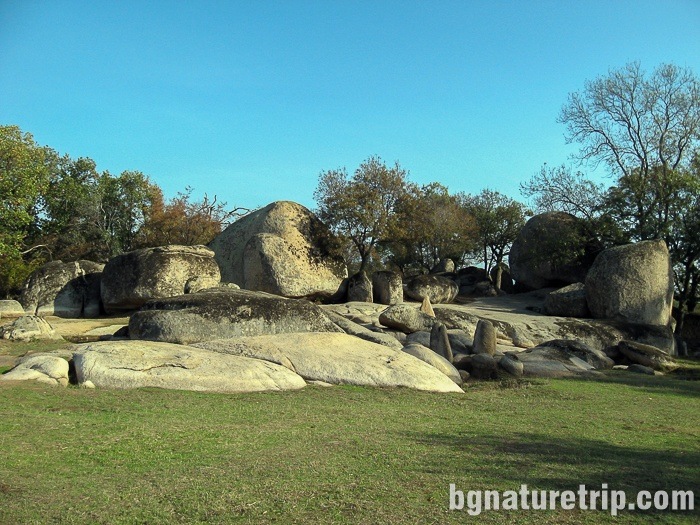
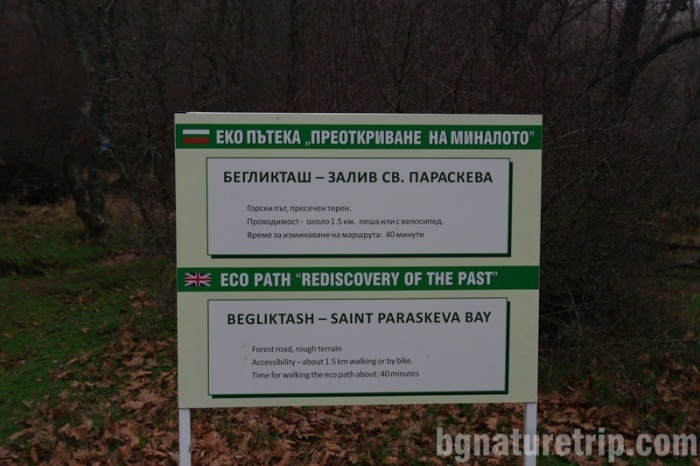
On the road passing through oak beech forest, you can see at many places piles composed of oval syenite blocks similar to the cliffs of Beglik Tash. With this in mind, it is additional evidence that cliffs of Beglik Tash were not entirely humanmade, but only sculptured and arranged according to the spiritual needs of the ancient people.
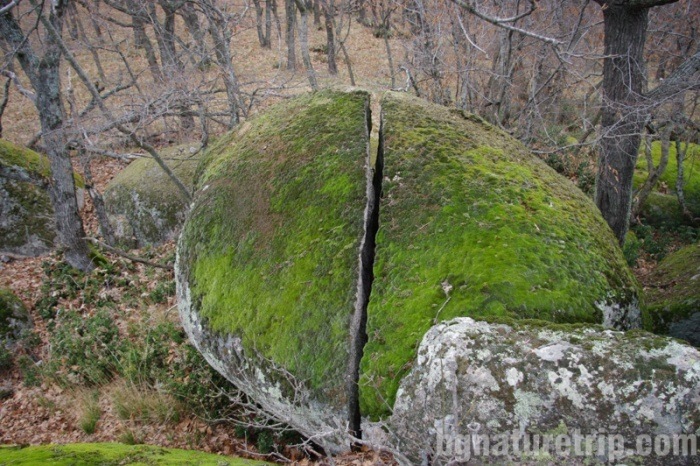
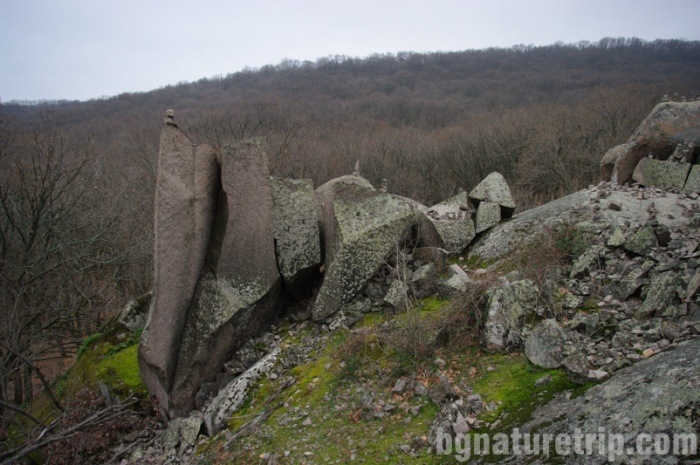
Route features
The road is wide enough, with a slight ascent for a long time, after which there is a descent. The length of the way, considering without the path to observe the rock formations, is about 2.5 km and a total displacement of 140 m. The stretch of the track, leading to the rocks is about 350 m. On some places, gradually, the trail narrows in the grass to almost invisible. However, because the field is small, there is no danger of losing yourself. We don’t recommend the short path for young children or hard-moving people. In case you visit this place in the summer or the spring, there is a danger of ticks, so take the necessary precautions. Also, it is a good idea when you are making this hike to equip yourself with hiking shoes or sneakers, long trousers, insect spray and water.
A picturesque route to Cape Beglik Tash in the vicinity of Ropotamo Reserve
When you reach the sea, an impressive view it will reveal to your left, which makes everyone exclaim with delight. The whole bay is composed of massive, rounded cliffs, similar to the cliffs at Beglik Tash. The cape has the same name as the Thracian sanctuary – Beglik Tash.
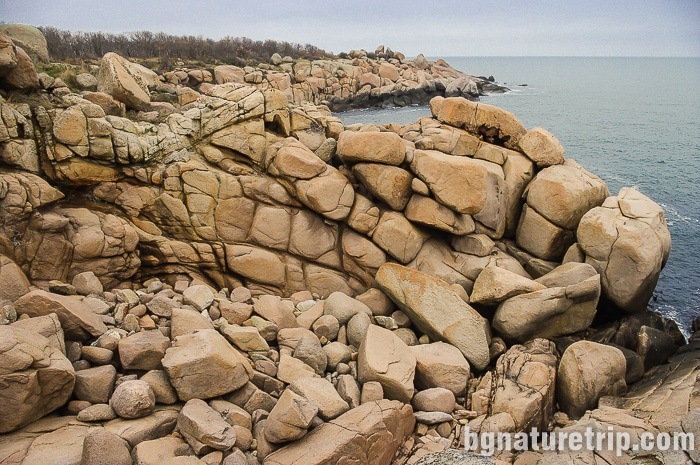
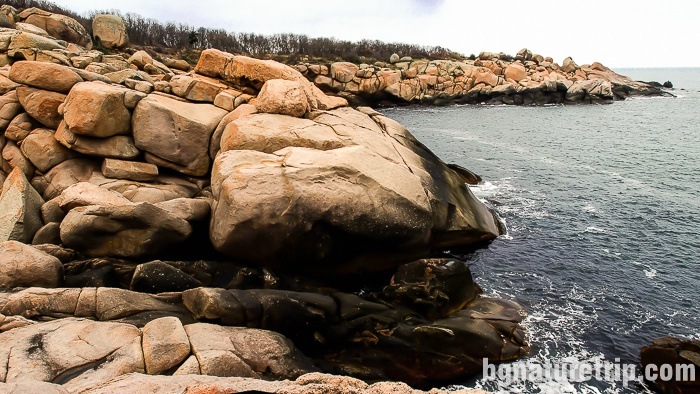
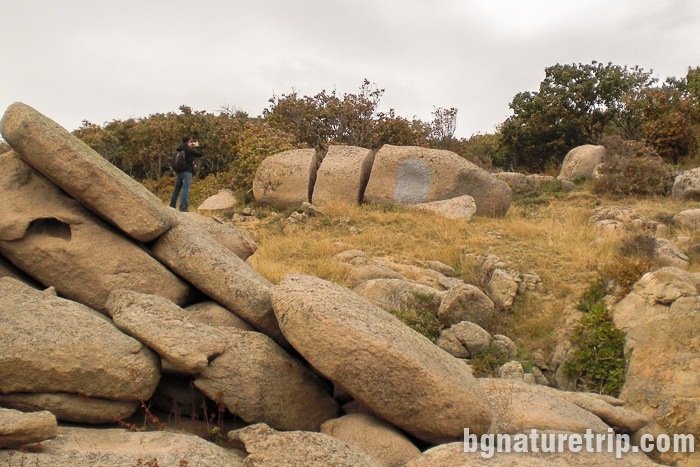
The stones are large size – therefore it is not advisable to climb on them.
If you turn your head to the right, you will see the Bay Zigra and part of the Cape “Maslen nos”.
Offers for hotels in Primorsko
Booking.com
Bay Zigra
Tall and inaccessible rocks surround Bay Zigra, which in the past looked like a deserted and peaceful place for the passing ships. The name of the bay comes from the Greek word “σιγα” – calmly, slowly. However, the pirates of the Bay St. Paraskeva used Zigra Bay, to keep on eye their unsuspecting victims.
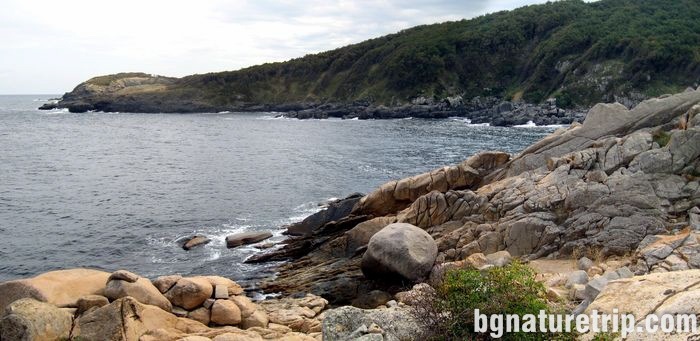
After you return to the main road, soon you will reach a brick-lined well. We do not know what age it is or whether have archaeologists researched it till now, but this is one more fascination for the walk.
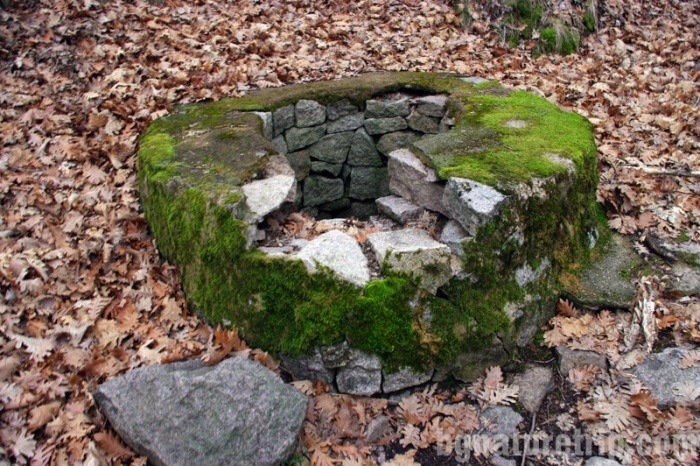
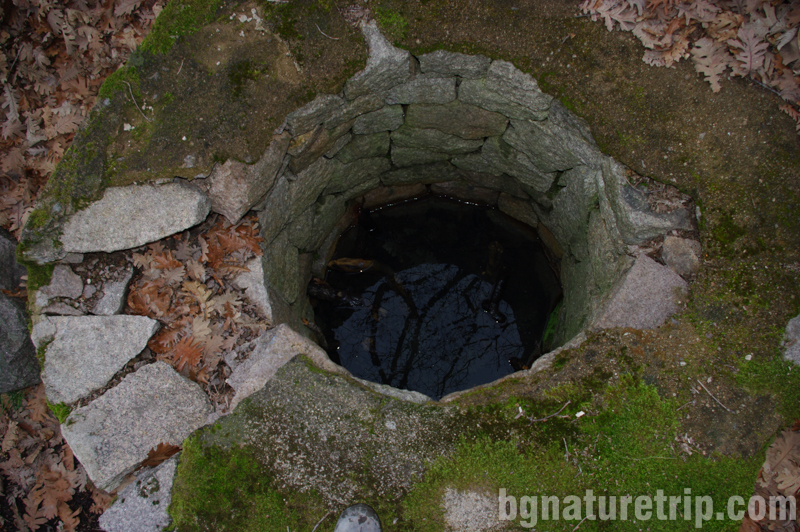
Primorsko: Wild Bay St. Paraskeva round the Ropotamo Reserve
The wild bay itself imitates a very long fjord with a length of about 700 m. As far as the front view extends, you will not see a trail of people or relics. The place is a beautiful combination of thick forest, sandy beach, sea and mouth of a small flowing river. The only thing, unfortunately, that spoils the wild face of the landscape is the plastic garbage ejected from the sea.
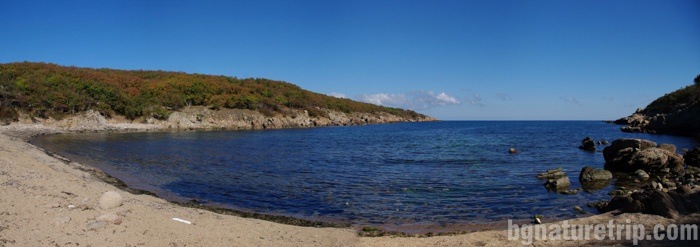
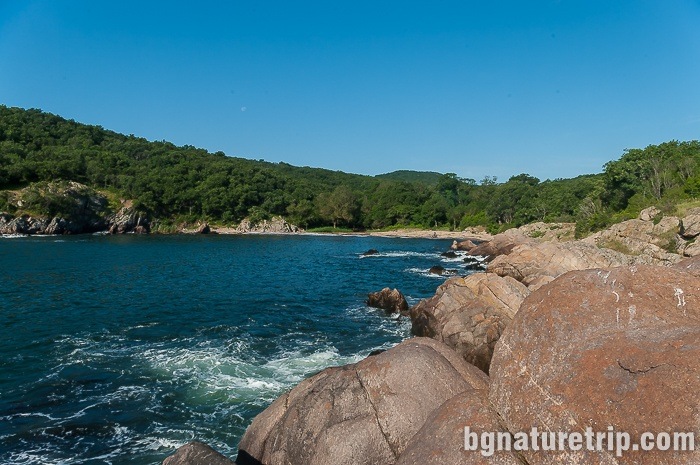
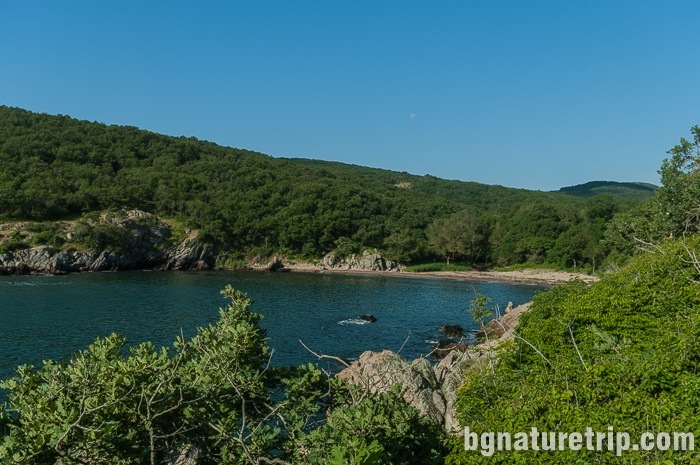
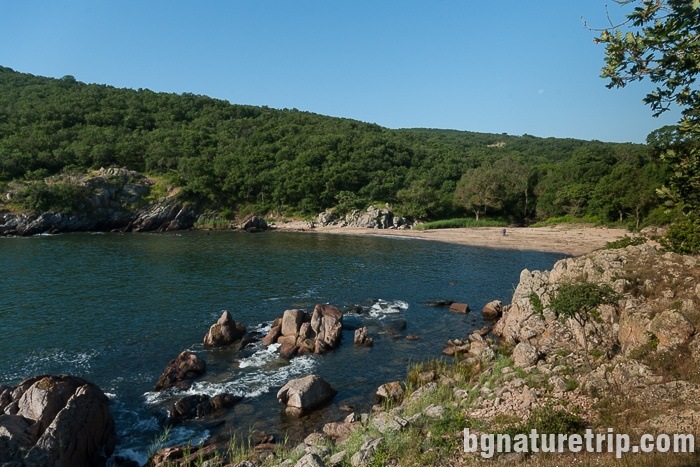
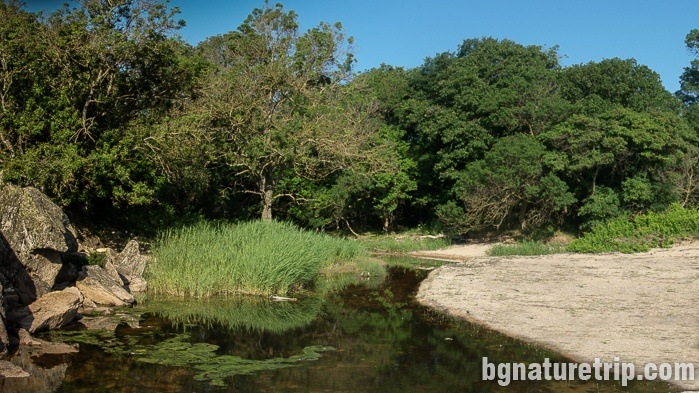
During the different ages, the bay had different functions. From antiquity to the Middle Ages it was part of a group of ports. The group included all the bays from Cape Maslen Nos to the mouth of the Ropotamo River. Later, the place became deserted, and pirates used it as a hiding place. One of the famous pirates who used this place was Valchan Vojvoda. It happened during the period of Turkish domination in Bulgaria (XIV – XIX century). According to one of the legends, hidden in the bay, Valchan watched and struck a Turkish ship carrying gold for the treasury at the beginning of the XIX century. Then he hid the treasure in the area of medieval fortress Ranuli. The fort got the name of the warrior and was called “Valchanovo kale” (Valchan’s fortress). It is located near the rock formation “The Lion’s head” in Ropotamo Reserve.
Origin of the name St. Paraskeva
The name of the bay comes from the church located here, with the name St. Paraskeva. According to historians, there is a connection with the Thracian sanctuary Beglik Tash. In the rituals of meeting with the summer solstice and the birth of the new life – the Hero, as an ideology performed at the sanctuary, similarities can be found with the virtues that confessed the saint St. Paraskeva, as the patron of the mothers. In the choice of this name, they see the legacy of the Thracian traditions but mixed with the Christian values.
The ruins of the medieval church of St. Paraskeva
Near the beach can be seen the ruins of the church St. Paraskeva. Many legends tell about it. According to one of them, the church was built in 925 by the Bulgarian king – Tsar Simeon the Great. He came here to hunt.
After archaeological research, as a result, it became clear that the church was a one-nave with a cross and a dome. Based on the discovered objects and graves – the church existed between the X-XVII century. Probably, Turkish enslavers burned the church. Also, ruins of other buildings and a holy spring were found around. As a result, historians conclude that there was a monastery, probably, with patron St. Paraskeva.
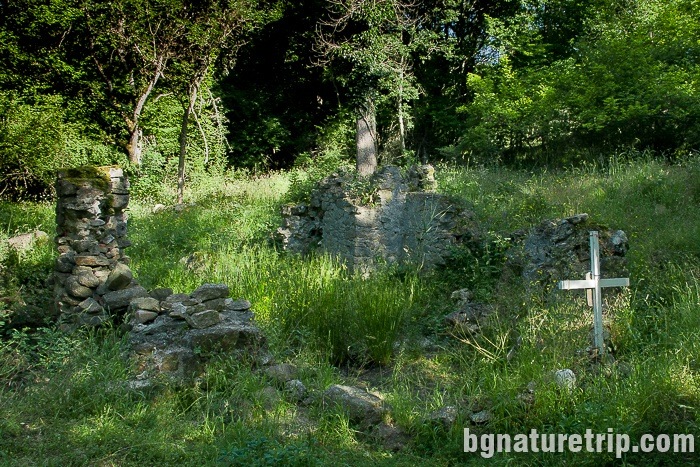
Preservation of the protected area
The area from the sanctuary Beglik Tash to the wild bay “St. Paraskeva” has forest status. Also, it is within the boundaries of two protected areas. Therefore some rules should be observed when visiting to protect natural resources.
To put it briefly – do not throw away waste, do not tear plants, do not light a fire, no camping, and let the place look like you’ve found it!
For more details, or if you intend to carry out particular activities other than a tourist walk, the full text of the laws can read here.
The exact boundaries of the protected area can see here https://gis.wwf.bg/mobilz/en/. So to do this, bookmark “Protected areas in Bulgaria” layer.
Plants in the area that seemed interesting to us
[supsystic-gallery id=’2′]
Continue the walk
For the other paths and landmarks in Ropotamo Reserve – look at the attached map.
In conclusion, if you are planning a more extended stay in the area, it is a good idea to choose Primorsko as a city for staying. It has many hotels and lodgings and can offer many entertainments to diversify your holiday at Bulgarian Black Sea Coast.
Offers for hotels in Primorsko
Booking.com